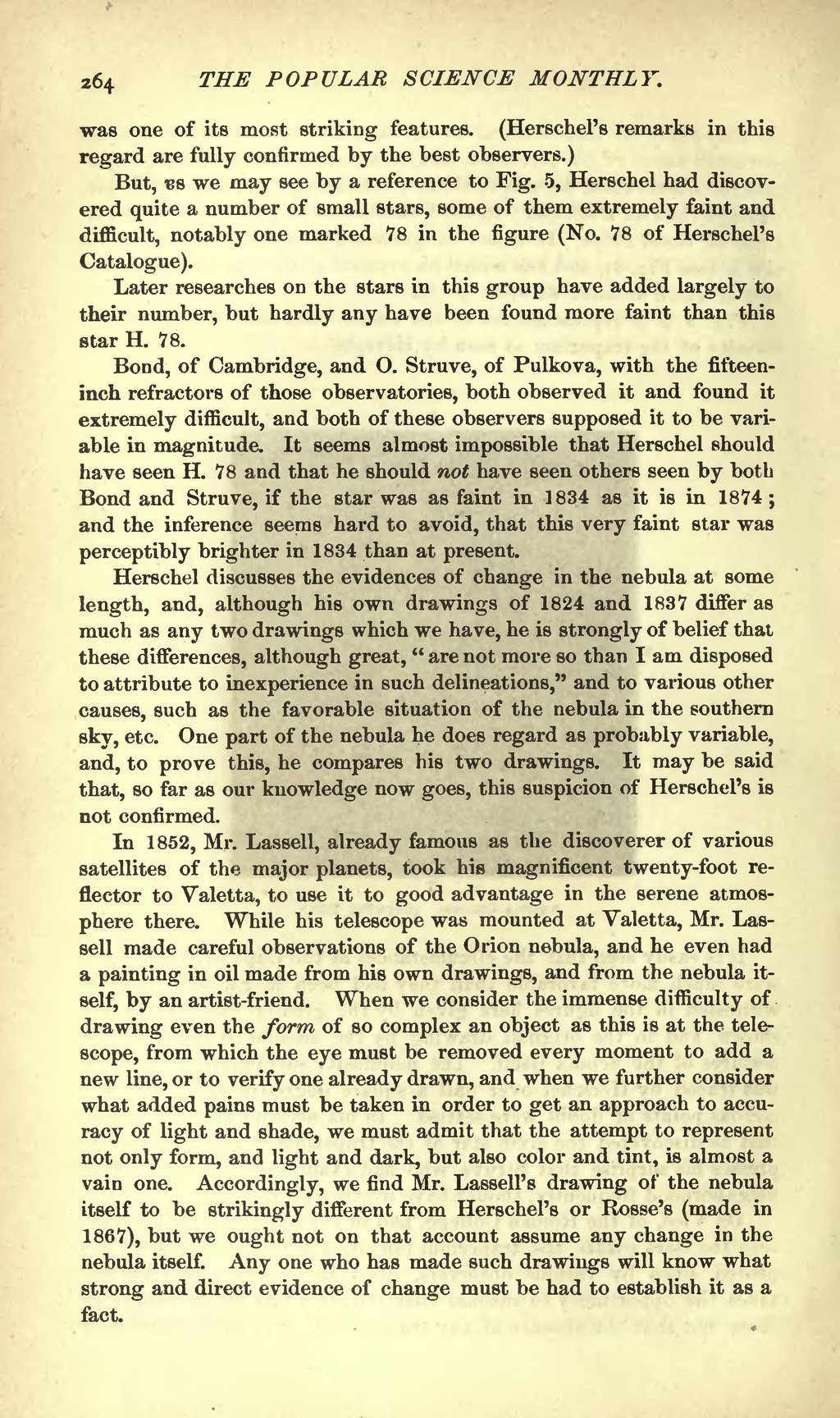was one of its most striking features. (Herschel's remarks in this regard are fully confirmed by the best observers.)
But, as we may see by a reference to Fig. 5, Herschel had discovered quite a number of small stars, some of them extremely faint and difficult, notably one marked 78 in the figure (No. 78 of Herschel's Catalogue).
Later researches on the stars in this group have added largely to their number, but hardly any have been found more faint than this star H. 78.
Bond, of Cambridge, and O. Struve, of Pulkova, with the fifteen-inch refractors of those observatories, both observed it and found it extremely difficult, and both of these observers supposed it to be variable in magnitude. It seems almost impossible that Herschel should have seen H. 78 and that he should not have seen others seen by both Bond and Struve, if the star was as faint in 1834 as it is in 1874; and the inference seems hard to avoid, that this very faint star was perceptibly brighter in 1834 than at present.
Herschel discusses the evidences of change in the nebula at some length, and, although his own drawings of 1824 and 1837 differ as much as any two drawings which we have, he is strongly of belief that these differences, although great, "are not more so than I am disposed to attribute to inexperience in such delineations," and to various other causes, such as the favorable situation of the nebula in the southern sky, etc. One part of the nebula he does regard as probably variable, and, to prove this, he compares his two drawings. It may be said that, so far as our knowledge now goes, this suspicion of Herschel's is not confirmed.
In 1852, Mr. Lassell, already famous as the discoverer of various satellites of the major planets, took his magnificent twenty-foot reflector to Valetta, to use it to good advantage in the serene atmosphere there. While his telescope was mounted at Valetta, Mr. Lassell made careful observations of the Orion nebula, and he even had a painting in oil made from his own drawings, and from the nebula itself, by an artist-friend. When we consider the immense difficulty of. drawing even the form of so complex an object as this is at the telescope, from which the eye must be removed every moment to add a new line, or to verify one already drawn, and when we further consider what added pains must be taken in order to get an approach to accuracy of light and shade, we must admit that the attempt to represent not only form, and light and dark, but also color and tint, is almost a vain one. Accordingly, we find Mr. Lassell's drawing of the nebula itself to be strikingly different from Herschel's or Rosse's (made in 1867), but we ought not on that account assume any change in the nebula itself. Any one who has made such drawings will know what strong and direct evidence of change must be had to establish it as a fact.

